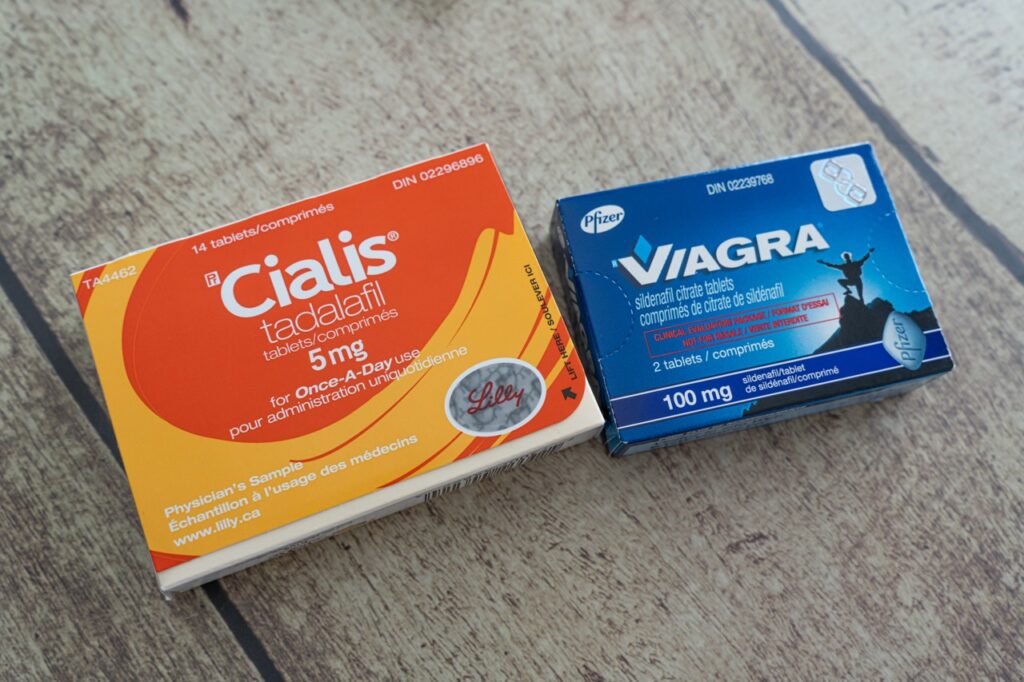Erectile dysfunction (ED) is a common condition affecting many men in Canada, with a significant impact on sexual function, self-esteem, relationships, and overall quality of life. While discussing ED can be challenging, it is crucial for men experiencing symptoms to seek help, as there are numerous safe, effective, and discreet treatment options available in Canada.
Various factors can contribute to the development of ED, including physical conditions, psychological factors, and lifestyle choices. Fortunately, advances in medical science have led to the development of diverse treatment options, ranging from conservative approaches to more advanced medical interventions.
This comprehensive guide will explore the various ED treatment options available in Canada, discussing their mechanisms of action, efficacy, potential side effects, and accessibility. By providing accurate, up-to-date information, we aim to empower men to make informed decisions about their sexual health and take the first step towards regaining confidence and enjoyment in their intimate relationships.
Understanding erectile dysfunction (ED) is the first step toward finding the right treatment. For a comprehensive overview of ED, including symptoms, causes, and initial steps to take, read our Jack Health’s Guide to ED. This resource offers valuable information to help you begin your journey towards better sexual health.
Treatment Options for Erectile Dysfunction in Canada
Erectile dysfunction (ED) is a common condition that affects many Canadian men, but the good news is that there are several safe, effective, and discreet treatment options available. These options range from conservative approaches like lifestyle changes and counseling to more advanced medical interventions such as oral medications, injectable drugs, and surgical procedures. Below, we will explore the various treatment options for ED that are accessible to men in Canada.
Conservative Treatment Options
For some men with mild to moderate ED, conservative treatment options may be sufficient to improve their symptoms and restore satisfactory sexual function. These options include:
- Lifestyle changes: Making healthy lifestyle choices such as quitting smoking, reducing alcohol consumption, exercising regularly, and maintaining a balanced diet can help improve overall health and reduce the risk of ED.
- Counseling: Psychological factors such as stress, anxiety, and depression can contribute to ED. Counseling, either individually or with a partner, can help address these issues and improve sexual function.
- Natural remedies and supplements: Some men may find relief from ED symptoms by using natural remedies or supplements such as ginseng, L-arginine, or DHEA. However, it is essential to consult with a healthcare professional before trying any natural remedies, as they may interact with other medications or have potential side effects.
Low-Intensity Shockwave Therapy (Li-SWT)
Low-intensity shockwave therapy (Li-SWT) is a relatively new treatment option for ED that is gaining popularity in Canada. This non-invasive procedure uses low-intensity sound waves to stimulate blood flow and promote the growth of new blood vessels in the penis. Li-SWT is typically administered in a series of treatments over several weeks and has shown promising results in improving ED symptoms for some men.
This therapy is available at select clinics across Canada, and interested patients should consult with a qualified healthcare provider to determine if Li-SWT is a suitable option for their needs.
Phosphodiesterase Type-5 Inhibitors
Phosphodiesterase type-5 (PDE5) inhibitors are a class of oral medications widely prescribed for treating ED. These medications, which include sildenafil (Viagra), tadalafil (Cialis), and vardenafil (Levitra), work by increasing blood flow to the penis, making it easier to achieve and maintain an erection. PDE5 inhibitors are highly effective for many men with ED and are generally well-tolerated.
In Canada, these medications are available by prescription and can be obtained through a family doctor, specialist, or licensed online pharmacy. Patients should discuss the potential benefits and risks of PDE5 inhibitors with their healthcare provider to determine if this treatment option is right for them.
Intraurethral Alprostadil and Vacuum Erection Pump Device
For men who do not respond well to oral medications or prefer alternative treatment options, intraurethral alprostadil and vacuum erection pump devices may be recommended. Intraurethral alprostadil, also known as MUSE (medicated urethral system for erection), is a small suppository that is inserted into the urethra to deliver medication directly to the penis.
This medication helps to relax the blood vessels and promote blood flow, leading to an erection. Vacuum erection pump devices, on the other hand, use suction to draw blood into the penis, creating an erection that can be maintained with the use of a tension ring. Both of these treatment options are available in Canada with a prescription and can be effective for many men with ED.
Intracavernosal Injection and Penile Prosthesis
For men with more severe or treatment-resistant ED, intracavernosal injections and penile prostheses may be recommended. Intracavernosal injections involve injecting medication directly into the penis to stimulate an erection.
This highly effective treatment option requires proper training and technique to avoid complications. Penile prostheses, on the other hand, are surgically implanted devices that allow men to achieve an erection on demand. There are two main types of penile prostheses: inflatable and semi-rigid. Both types are available in Canada and can provide a long-term solution for men with ED who have not responded to other treatments.
Advanced and Future Treatment Directions for ED
The treatment landscape for erectile dysfunction (ED) is rapidly evolving, with groundbreaking research and innovative approaches promising new hope for those affected. Canada’s healthcare system, known for its commitment to pioneering medical treatments, is at the forefront of adopting and researching these advanced therapies. These future-focused interventions aim to address the underlying causes of ED, offering more personalized and long-lasting solutions.
Stem Cell Therapy, Platelet-Rich Plasma, and Amniotic Fluid Matrices
Among the most exciting developments in ED treatment are Stem Cell Therapy, Platelet-Rich Plasma (PRP) injections, and the use of Amniotic Fluid Matrices. These regenerative medicine approaches focus on repairing and rejuvenating damaged penile tissues, potentially restoring natural erectile function:
- Stem Cell Therapy utilizes the body’s own regenerative capabilities to repair erectile tissue, promising a revolutionary approach to treating ED at its source.
- Platelet-Rich Plasma (PRP) Injections, derived from the patient’s own blood, are administered directly into the penile tissue to stimulate repair and growth, leveraging growth factors to enhance tissue healing and regeneration.
- Amniotic Fluid Matrices, rich in growth factors and cytokines, are being explored for their potential to regenerate penile tissue and restore erectile function without the need for pharmaceuticals.
These treatments are currently under research and clinical trials, offering a glimpse into the potential future where ED can be treated more effectively and with lasting results.
As we explore the horizon of ED treatments, including stem cell therapy, platelet-rich plasma, and innovative hormonal therapies, staying informed on the latest research and treatment options is vital. To learn more about cutting-edge treatments and what the future holds for ED care, check out Advanced ED Treatments collection at Jack Health.
Dual PDE5i and Testosterone Therapy
For men with ED related to hormonal imbalances, particularly low testosterone levels, a combination of Phosphodiesterase Type-5 inhibitors (PDE5i) and Testosterone Replacement Therapy (TRT) is emerging as a dual therapy approach. This strategy aims to address both the hormonal and vascular components of ED:
- PDE5i medications, such as sildenafil (Viagra) and tadalafil (Cialis), are well-established in improving erectile function by enhancing blood flow to the penis.
- Testosterone Therapy addresses hormonal deficiencies, potentially improving libido and overall sexual function.
The combination of these treatments is tailored to individuals for whom single-modality therapies have been insufficient, offering a more comprehensive solution to ED.
Penile Rehabilitation Post-Radiotherapy
Penile Rehabilitation Post-Radiotherapy is a proactive strategy aimed at preserving erectile function in men who have undergone radiotherapy for prostate cancer. This approach typically involves:
- Early intervention with PDE5i medications or vacuum erection devices to promote blood flow to the penis.
- Counseling and therapy to address the psychological impact of cancer treatment on sexual function.
The goal is to minimize the long-term effects of radiotherapy on erectile function, with Canadian healthcare providers increasingly recognizing the importance of integrating sexual health into cancer recovery plans.
These advanced and future directions for ED treatment reflect a broader trend towards personalized medicine, where therapies are tailored to the individual’s specific condition and needs. As research continues, these innovative approaches offer hope for more effective, long-lasting solutions to erectile dysfunction, significantly impacting men’s health and quality of life.
Erectile Dysfunction Treatments in Canada: Which is Best for You?
The best treatment for ED depends on various factors, including the cause and severity of your condition, your overall health, and your personal preferences. Discussing your options with a Canadian healthcare provider can help you understand the benefits and limitations of each treatment, ensuring you make an informed decision tailored to your needs.
Canada’s healthcare system offers a comprehensive range of services and support for men dealing with ED, from initial consultation and diagnosis to treatment and follow-up care. With the right approach, men can find effective solutions for ED, improving their quality of life and sexual health.
Choosing the right treatment for ED can be overwhelming due to the variety of options available. Read our How to Choose an ED Treatment tips for a personalized guide that helps you navigate these choices and determine which treatment might be best for you. This resource provides insights into selecting the most suitable treatment based on your specific condition and lifestyle.
Key Takeaways
- Comprehensive Treatment Options: Erectile dysfunction (ED) can be managed through a wide range of treatments including oral medications, lifestyle changes, counseling, and advanced therapies like penile injections and surgical options. Tailoring the treatment to the individual’s specific cause of ED and preferences is crucial for effective management.
- Preventive Measures Are Effective: Adopting a healthy lifestyle, managing chronic health conditions, limiting alcohol consumption, and quitting smoking can significantly reduce the risk of developing ED. Prevention through lifestyle modification is often an effective strategy for maintaining erectile function.
- Safety and Side Effects: While medications are effective for treating ED, they come with potential side effects ranging from mild (such as headaches and facial flushing) to severe (such as priapism or sudden vision loss). It’s important to use these medications under the guidance of a healthcare provider to ensure they are safe and appropriate for your health situation.
Frequently Asked Questions
What Are the Main Treatments for ED?
The main treatments for erectile dysfunction (ED) include oral medications to enhance blood flow, lifestyle modifications such as exercise and diet changes, counseling for psychological support, vacuum erection devices, penile injections like alprostadil, surgical options like penile implants, and emerging therapies such as shockwave therapy, stem cell therapy, and PRP injections.
Can Erectile Dysfunction Be Prevented?
Erectile dysfunction can be prevented or its impact minimized by maintaining a healthy lifestyle, managing chronic conditions such as diabetes and heart disease, limiting alcohol consumption, quitting smoking, and scheduling regular medical check-ups.
How Do Medications Such as Viagra, Cialis, and Levitra Work? What Are Possible Side Effects?
Viagra, Cialis, and Levitra work by inhibiting the enzyme PDE5 to enhance blood flow to the penis, aiding in achieving erections during sexual stimulation. Common side effects include headaches, facial flushing, nasal congestion, stomach discomfort, dizziness, blurred vision, changes in color vision, and back pain. Rare but serious side effects like priapism and sudden loss of vision or hearing require immediate medical attention. It’s important to use these medications under healthcare professional guidance to ensure safety and assess potential drug interactions.




















 (US)
(US)



